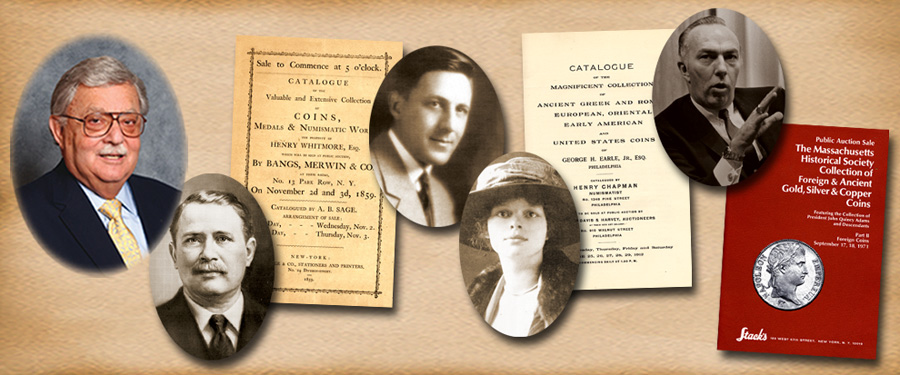
How was it kept?
In Part 1 of this story about the value of pedigrees, I tried to explain how value could be added to a coin when the pedigree is retained by its owners through the years. One way that pedigrees were maintained from owner to owner was by the use of coin envelopes and other “low-tech” methods.
Before the late 20th century there were no grading services or encasement in sealed plastic holders. Today when a coin is graded it often has, if available, the latest pedigree of the coin printed on the holder. Years back when we did not have encapsulation of coins in "slabs" (the common word to describe the encased coins today), the owner of a coin often relied on the pedigree printed or written on a coin envelope (usually 2 x 2 inches), and that envelope was kept with the coin as it traveled from one collection to another. Earlier or when envelopes were not available, the owner or cataloger might try to match the coin to one in an earlier catalog, if it had a photograph or a distinct mark or impairment that could be described and readily identified.
Some old time collectors used cabinets with numerous drawers to display their coins for easy viewing. The drawers or trays within these cabinets were flat, about 1/2 – 1 inch high, as much as 24 x 24 square, felt or soft paper lined, and with dividers spaced in rows, so the coins would not slide. Some of these spaces were cut with circular openings to hold the display straight. Often paper disks under each coin would hold the basic information of the coin and its pedigree.
In the early 20th century, T. James Clark, a pill box manufacture and also an avid collector, made open-face boxes in various diameters to hold coins and provided on the back of the box a place to describe the coin. Eventually Wayte Raymond made pages with slides on each side, in order to see obverse and reverse. Whitman made small blue folding albums printed with pertinent information and with room for recording pedigree. Plastic holders of various sizes and dimensions came to be made that could also have basic numismatic information stamped on them, and eventually this led to the present day and the encased coin holders used by the grading services. Many options were created to display coins, record information, and establish collecting goals for most series by having spaces to fill for each date, mint, etc.
Though these methods were not foolproof, for many coins they helped answer important questions: Who owed this coin before? Was he or she a famous person? Was this from some earlier, almost complete collection? Collectors became excited about a coin’s pedigree as well as its rarity, price and other features. The coin’s history became important and dealers, when describing a coin for auction or a price list, would research earlier pedigrees.
Dealers like Stack’s Bowers research all coins they can for earlier pedigrees. The lots sold by auction usually have an envelope or tag identifying the sale they are being sold in, along with their lot number, so the pedigree is sustained for the future. In this way the value of a coin’s past can be maintained, as long as the information is kept intact.





